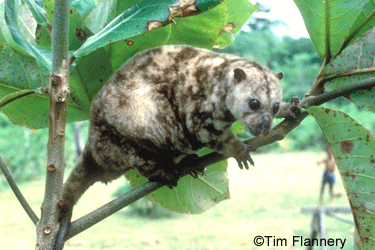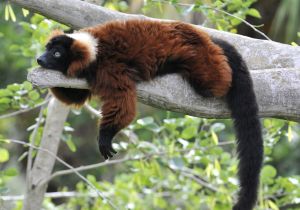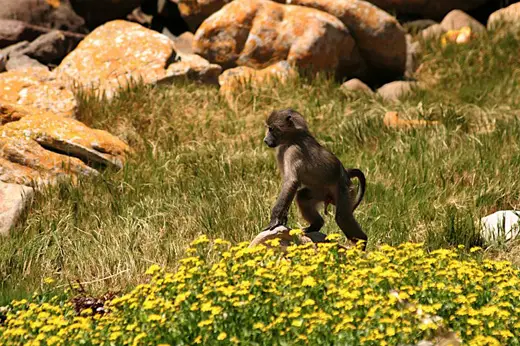Pygmy Anteater
Pygmy Anteater, also called Silky Anteater is a species of anteaters that live in tropical forests of Southern and Central America, from Southern Mexico to Bolivia and Brazil. This small anteater spends his life in the trees, maneuvering through the branches, looking for termite nests.
The Pygmy Anteater is the smallest anteater, being only 15 – 23 cm long and weighing as little as 300 – 500 grams. This little mammal is adapted to living in the trees, with long legs and curved nails, that help climbing. The tail that is often longer than the Pygmy Anteater itself, is very strong, increasing the anteater’s agility even more. The fur of the Pygmy Anteater varie is dense and short, varying from gray to golden in colouration.
Pygmy Anteaters spend most of their lives in the trees and descend to ground level rarely. Walking on ground is also rather difficult for this mammal, as its long claws make it hard to balance on solid ground. The Pygmy Anteater is a nocturnal creature and spends daytime sleeping in a tree cavity. By dusk, the anteater wakes up and starts looking for food, trying to stay high above ground, out of reach of their natural predators.
As all anteaters, the Pygmy Anteater feeds on termites, ants and other insects. All anteaters rely on their sense of smell to find ant nests under bark of the trees. The Pygmy Anteater uses its sharp claws to rip termite nests open, after that catching them with the long tongue, that is covered in sticky saliva, which immediately immobilizes insects. Unlike other anteaters (for instance, the Giant Anteater), the Pygmy Anteater’s jaw isn’t elongated and they can still open their mouth, but their teeth are not suited for chewing and all the termites the anteater catches, are swallowed hole.
Being a nocturnal and very shy creature, the Pygmy Anteater hasn’t been observed enough to find out about its mating habits or their lifespan. Scientists think that gestation lasts for 6 months and one cub is born. The parents take care of their younglings for quite a long time, protecting them from predators and helping them with feeding.
Pygmy Anteaters have many natural predators, therefore they are very cautious, preferring high treetops and avoiding all strangers. When confronted, however, this anteater is far from helpless – the anteater stands on its hind legs and attacks with the sharp claws. In fact, this defense is said to be so successful, that even the Jaguar will avoid these tiny mammals.
These anteaters are not endangered and they have never been a specific hunting target for humans. Although lodging the tropical forests may be threatening to these animals, their population is stable and this species is not in danger.





Pigmy anteater pocesses a sticky tounge, which help them to eat ant easily.ant stick on their tounge and anteater eat them.